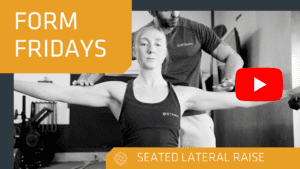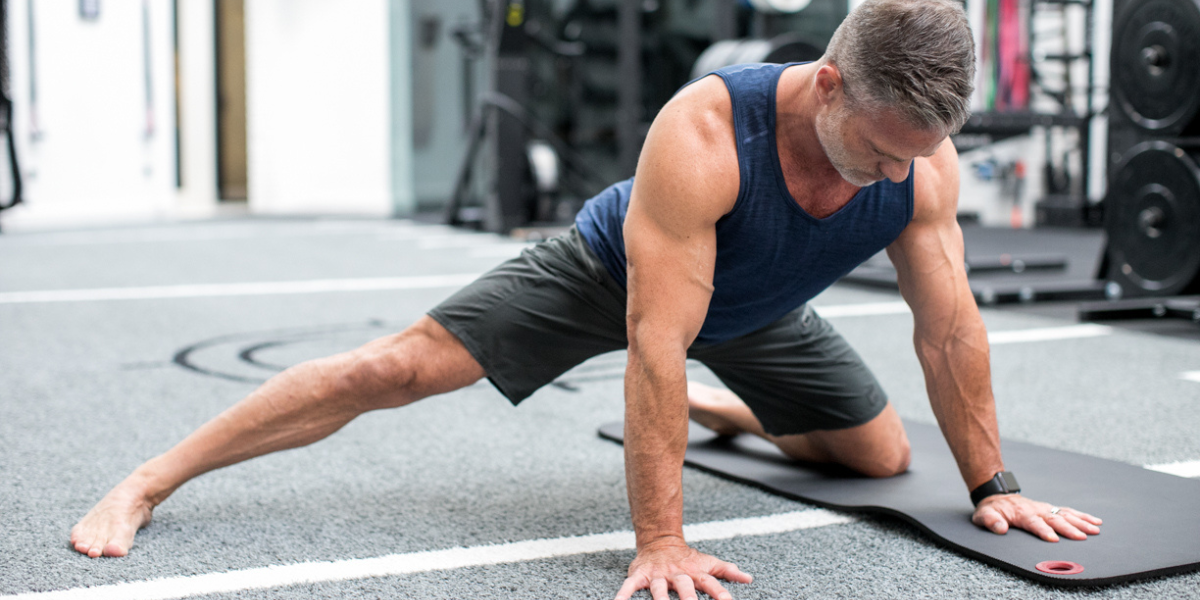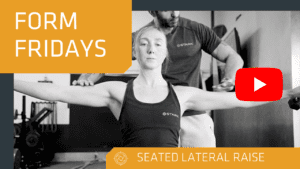
Looking to build up your shoulders? For the best results, using the proper form will not only keep you safe, but also allow you to activate (and get the most from) the right muscles! Let’s hear what some of the top coaches at Stark has to say about Seated Dumbbell Lateral Raises!
Quick Disclaimers:
- The body is a surviving machine. It will do whatever is necessary to compensate for the tension placed on the muscle. With the correct form, you eliminate those minor compensations to create maximize tension on the muscle.
- There are many ways to perform an exercise correctly. We will be teaching you one of those ways.
Seated Dumbbell Lateral Raise:
Hold onto your dumbbells and sit up straight with your arms by your side. Start by lifting your arms and driving your hands up and out to around shoulder height, then lower them back down with control.
The most common compensations with lateral raises are allowing the upper traps to over activate, and rotating the elbows to shift tension away from the medial deltoid.
Mistake # 1: Over-Recruiting the Upper Traps
The traps are a very large muscle group, and tend to take over for the medial deltoid (aka the muscle we are targeting here). To avoid this from happening, focus on driving your hands out, not up. You’ll know you are doing it right when you feel it in your shoulder more than your lower neck, and if loads are appropriate your speed will also slow.
Mistake #2: Rotation of the Elbows
The elbow starts to tilt backwards and rotate the shoulder slightly, but enough to shift tension from the medial to the front deltoid. To prevent this compensation, keep your elbow pointed behind you, and your upper arm flat so the medial deltoid is sitting on top and positioned for use.
Bonus Tip!
Add more stimulus to the muscle by stopping short on the way down. Leave a gap between your body and arms while lowering the dumbbells to increase the tension!

CEO Todd Vande Hei: From Dad Bod to Fit at Fifty
Here's I got rid of the dad bod.
Are Food Sensitivities Keeping You from Reaching Your Fitness Goals?
There’s been a lot of media hype over the last several years about gluten intolerance, dairy sensitivity, and food allergies, but what do these terms...


.png?width=70&height=70&name=Stark_LogoMark%20(1).png)
 Stark
Stark
